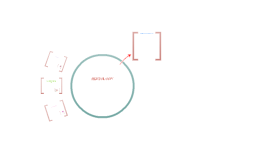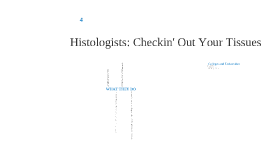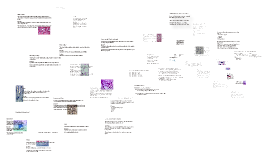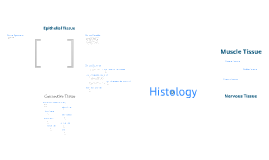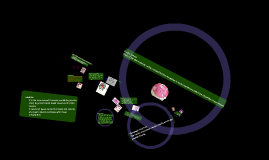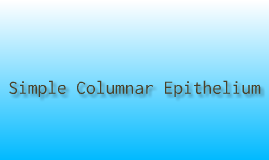Histology
Transcript: Simple Epithelial Epithelial Tissue NERVOUS TISSUE Connective Tissue Muscle Tissue Location: Ligaments, tendons Function: attaches muscle to bone, bone to bone Description: densely packed collagen fibers Reticular Location: heart Function: to pump blood Description: striated, one nucleus per cell Stratified Cuboidal Location: almost everywhere in the body Function: insulates the body, protects some organs, serves as a site of fuel storage Description: many cells containing large lipid deposits Stratified Epithelial Location: attached to the bones Function: contracts to pull on bones or skin Description: striated, multinucleated, long cylindrical Areolar LC Stratified Squamous Location: walls of hollow organs, ex: stomach, uterus, etc Function: moves involuntarily Description: No visible striations, spindle shaped cells, one nucleus per cell Histology Location: around organs, under skin Function: as a packing tissue contains all fiber tissue Description: Soft, pliable tissue, like cobwebs Location: Spinal Cord and Brain Function: To send impulses to other areas of the body Description: composed of neuron cells and nerve supporte cells Hyaline Location: lines digestive track Funtion: Goblet cells secrete mucus, Protection Description: single layer of tall cells Transitional Blood Adipose LC Cartilage Stratified Columnar Elastic Location: Linings of larger ducts of mammary glands, sweat glands, salivary glands, pancreas Function: Protection Description: Two or three layers of cuboidal cells Location: Larynx, end of bones, entire fetal skeleton before birth Function: provide flexible support Description: abundant collagen fibers with a rubbery matrix Location: Lymph nodes, spleen, bone marrow Function: Protection, Binds, Provides support Description: Delicate networks of interwoven fibers Simple Columnar Elastic DC Simple Cuboidal Location: Respiratory system Function: Absorb and Excrete Description: single layer but some cells are shorter than others Location: glands and ducts; wall of kidney tubules; covers the ovaries Function: Absorption and secretion in kidneys, secretion in glands Description: single layer of cube like cells Identifying and classifying the four tissues NERVE Location: Skin Function: Protection, moisture Descprition: Cells at the top are flattened Dense Irregular Skeletal Muscle Dense Regular DC Location: Salivary Glan Function: Absorption & Secretion Description: Surface cells are columnar, underneath vary in size and shape Cardiac Muscle Location: Inner lining of urinary bladder, uterus, upper urethra Function: Changes in response to pressure/tension, expandable lining, barrier to prevent diffusion Descprition: Several layers that can stretch and change physical relationship Location: Ear Function: produces elasticity Description: Freely branched elastic fibers Connective Tissue Proper Location: bone Function: used to protect and support the body Description: Hard matrix of calcium salts; large numbers of collagen fibers Location: in body Function: transport material Description: blood cells surrounded by fluid matrix called blood plasma FibroCartilage Location: in between vertabrare Function: higly compressible Description: densely packed thick collagen fibers Location: around organs, under skin Function: withstands pressure Description: mainly collagen fibers Pseudostratified Columnar Simple Squamous Bone Osseous Location: lines body cavities, lungs, and capillaries Function: Diffusion, Filtration, Osmosis, Cover Surfaces Description: single layer of flat cells Smooth muscle Location: Ear Function: produces elasticity Description: Freely branched elastic fibers






